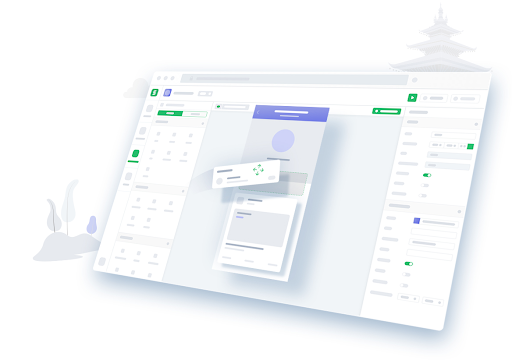How GTIN Barcodes Simplify the Supply Chain and How to Generate Them Effectively

In a world where products travel thousands of miles before they reach a customer’s doorstep, accuracy and speed are the backbone of a successful supply chain. One silent but powerful enabler of this system? – Barcode/GTIN.
If you’ve ever wondered how logistics giants manage to track millions of products worldwide or how your local retailer keeps their shelves stocked without chaos, the answer often lies in GTINs.
Let’s dive into what GTIN barcodes are, why they’re essential for modern supply chains, and how your business can start using them the right way.
What Is a GTIN Barcode?
GTIN (Global Trade Item Number) is a globally unique identification number assigned to a product. When encoded into a barcode, this number becomes scannable and readable by machines. That’s when the real magic begins — GTIN barcodes allow instant product identification across retail, wholesale, eCommerce, and logistics systems.
GTINs have four standard formats:
- GTIN-8 (for small packaging)
- GTIN-12 (commonly used in North America, like UPC)
- GTIN-13 (EAN-13, widely used globally)
- GTIN-14 (used for cases and pallets)
Regardless of the size or scope of your business, if you sell products, GTIN barcodes are your key to seamless product management and global interoperability.
Supply Chain Complexity: The Problem GTINs Solve
Modern supply chains are long, layered, and lightning-fast.
From sourcing and manufacturing to warehousing, transportation, and retail, each link in the chain involves thousands of moving parts. Managing this manually or with outdated systems is a recipe for:
- Misplaced inventory
- Stockouts and overstock
- Inefficient audits
- Human errors
- Inaccurate fulfillment
- Lack of visibility
And in an era of next-day deliveries and global commerce, such inefficiencies are simply unacceptable.
This is where GTIN barcodes become a game-changer.
The Role of GTIN Barcodes in the Supply Chain
Enhanced Product Identification
Every product is assigned a unique GTIN. When this GTIN is embedded in a barcode and scanned, it delivers instant and accurate product data to any connected system worldwide.
Inventory Management Made Smart
GTIN barcodes streamline inventory management from end to end. From real-time stock counts to automated reordering, businesses can enable complete visibility and control over their inventory.
Fewer Errors, Higher Accuracy
Manual data entry can introduce errors, especially at scale. Scanning GTINs ensures clean, standardised data entry, reducing mistakes and inconsistencies in your product database.
Speeding Up Processes
GTINs help save time, from check-in at a warehouse to checkout at a retail counter. Those seconds add up to hours saved across operations.
Total Traceability
Need to track a product batch from the factory to the store? GTINs enable tracking and faster response in case of recalls, disputes, or compliance issues.
Key Benefits of GTIN Barcodes for Supply Chain Success
Let’s connect the dots between barcodes and bottom lines.
Lower Operational Costs
GTINs reduce labour, printing errors, misplaced items, and return issues — saving both time and money.
Real-Time, Actionable Data
Every scan is a data point. With GTINs, companies gain real-time insights into sales, movement, demand patterns, and performance. This empowers better forecasting and decision-making.
Digital Integration Across Systems
GTIN barcodes integrate smoothly with:
- ERP platforms (like SAP, Oracle)
- Point of Sale (POS) systems
- eCommerce platforms like Amazon and Flipkart
This means no data silos, just one connected ecosystem.
Customer-Centric Experiences
No one likes waiting or receiving the wrong item. GTINs help ensure fast, accurate order fulfilment, better inventory visibility, and fewer out-of-stock scenarios — all of which lead to happier customers.
How to Generate GTIN Barcodes Effectively
Creating a GTIN barcode isn’t just about punching in a number. It involves using standards-compliant tools and maintaining quality assurance.
What Is a GTIN Barcode Generator?
A GTIN barcode generator is a tool that takes your GTIN and converts it into a readable barcode format (EAN, UPC, etc.). It allows you to create, download, and print barcode images that can be applied to product packaging or labels.
Step-by-Step: Generating GTIN Barcodes
Step 1: Choose Your GTIN Format
Pick from GTIN-8, 12, 13, or 14 based on:
- Product size
- Region
- Packaging level
Need help? Refer to GS1’s official guide for detailed format recommendations.
Step 2: Select a Trusted Generator Tool
Use a GS1-accredited barcode generator or DataKart. Avoid free tools that don’t follow ISO standards — they could produce unreadable or non-compliant barcodes.
Step 3: Input Product Data Accurately
Enter GTIN, product description, brand, and category correctly.
Step 4: Customise and Generate
Select your barcode format (EAN-13, UPC-A), resolution, and dimensions. Generate your barcode and download it in print-ready formats like PNG.
Step 5: Test for Scannability
Before mass printing, scan your barcode using a real scanner or barcode verification software to ensure readability.
Best Practices
- Use high-contrast colours
- Avoid printing barcodes too small or on curved surfaces
- Print in high resolution
- Store barcode images securely with version control
- Validate using GS1 barcode verification tools
Integrating GTIN Barcodes into Your Supply Chain
Once you’ve generated GTIN barcodes, the next step is implementation.
Conclusion
GTIN barcodes may be small, but their impact is enormous. From better inventory control and faster transactions to fewer errors and happier customers, they bring consistency and clarity to even the most complex supply chains. Whether you’re a manufacturer, distributor, D2C brand, or retailer, investing in GTIN barcode implementation isn’t just smart — it’s strategic.







